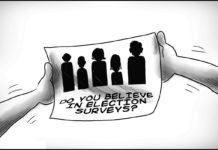
DESPERATE times call for new ideas, some of which might sound stupid or ridiculous.
As there seems to be no solution to the problem of what to do with plastic waste, I am proposing this new idea of buying and selling plastic waste by the kilo.
Since there are too many types and sizes of plastic, it would be very difficult to assign a different buying and selling price to each type or size, hence the idea of using kilograms as a measure.
Of course, this idea will not work if there is no market for plastic waste, so what needs to be done is to create the legal basis for the buying and selling. In effect, the legal basis will create the market for the plastic waste.
In practical terms, it could mean giving incentives to companies that would buy these goods, including the existing junk shops. I do not have the data with me right now, but I think that the small sachet packaging of many household products could account for the bulk of waste plastic that are not collected and recycled.
The grand irony here is that while the poor people may be the ones buying these sachets, they are the ones who suffer most from a polluted environment. Generally speaking, sachets are just part of a bigger category of waste known as one-way plastic.
While some of these plastics may be recyclable, that could not happen if these are not collected in the first place. And the only way to ensure that these are collected is to assign an economic value to it. This could be a way to encourage recycling.
TOWARDS A BIGGER FEED IN TARRIF FUND
Maintaining a Feed-in- Tariff (FIT) program is a good idea, even if the system has some weak points as of now.
The main idea behind FIT is to encourage the development of more energy through renewable sources such as wind, hydro and solar. That is the upside. The downside, which is the weak point right now, is that the funds to enable FIT comes from additional fees that are collected from electricity consumers.
Because of the existing source of funds, it has in effect become a damn if you do, damn if you don’t situation. That is so because electricity consumers are happy when FIT collections are suspended because their electricity costs go lower in the short run, but actually they should be unhappy because it will eventually make their electricity costs go higher in the future, if and when renewable energy sources are not developed.
I think that the solution to this problem is plain and simple. Instead of getting the money from the electricity consumers, the government should just allocate more funds for this purpose through the General Appropriations Act (GAA), perhaps giving the additional budgets to the Department of Energy (DOE ).
I think that the Congress should do some pencil pushing so that they could discover through macroeconomic analysis that the economy could benefit more in the long run if renewable energy development would have its own funding source rather than getting it due to some kind of a penalty clause. This is actually a cost and benefit analysis./PN



